When I arrived at Lana Williams’ studio after a short walk, she offered me fancy sparkling water from France. We were in Real Time and Space, a collectively-run studio and artist residency program near Oakland’s Chinatown. We beheld the water and drank — it was delicious, but what was it?
Looking back, those fancy water bottles from France keyed several of the themes we’d discuss that evening. How is the value of water determined? What kind of water, and from where, ends up in fancy bottles? How does it end up there, and who does it end up nourishing?
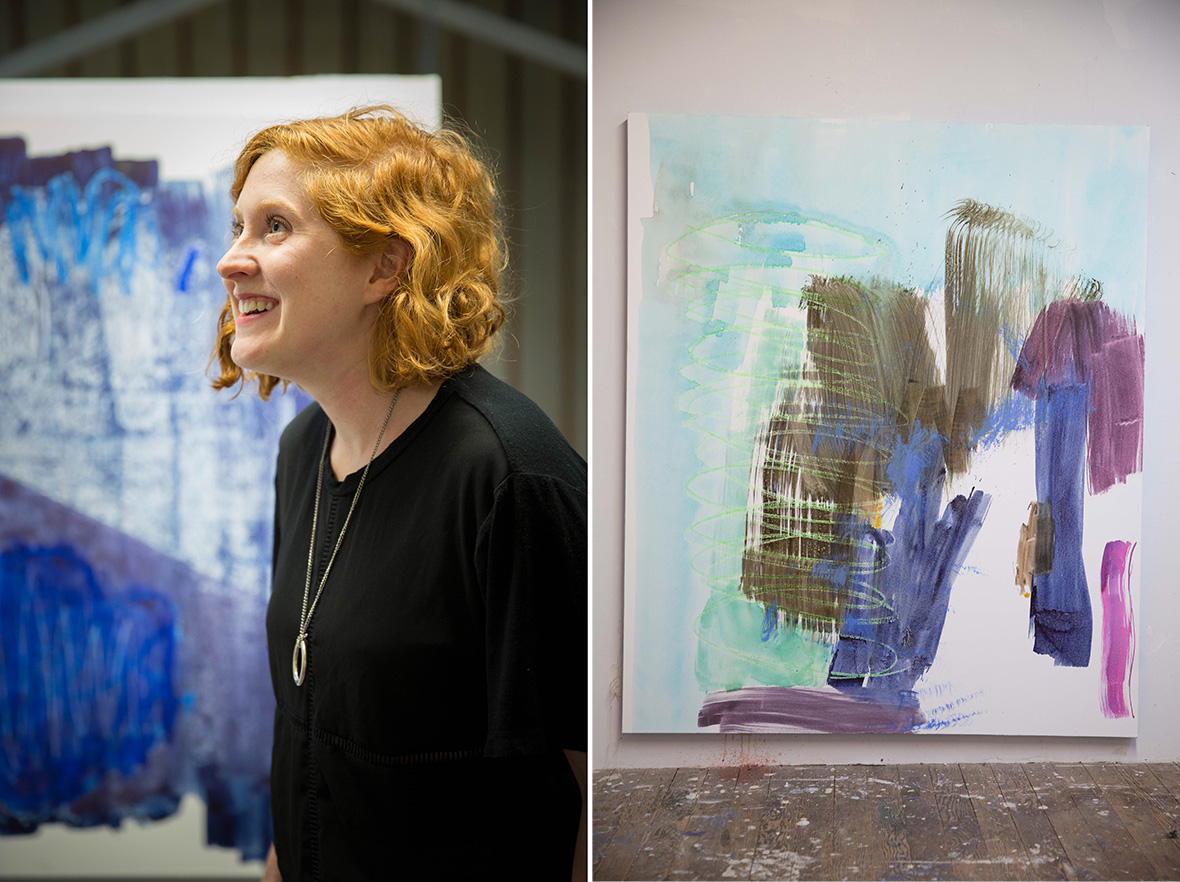
The question of value is critical for Williams’ practice, in a number of evolving ways over the years. In her recent work, this question concerns her materials, especially her use of dye.
Dye is one of the earliest forms through which sheer color obtains meaning. Take Tyrian purple for instance, the platinum of ancient dyes. To make Tyrian purple, predatory rock snails native to the Mediterranean were harvested by the thousands. While the snails’ bodies are not purple, boiling them transforms their chemical secretions into a stinky but beautiful substance the Greeks called porphyry and the Romans purpura. From these lowly sea carnivores, then, came one of the most expensive commodities of the ancient world.
Certain “objective” qualities made Tyrian purple valuable: this dye doesn’t fade in the sun, but actually becomes brighter over time. This resistance to fading, suggestive of immutability and even immortality, made it an obvious choice for ancient royalty and their heirs. But, in the end, the value of dye is arbitrarily determined. Ancient markets facilitated the transfer, and oversaw the value, of these precious materials — precious materials which were, essentially, boiled snail turds.
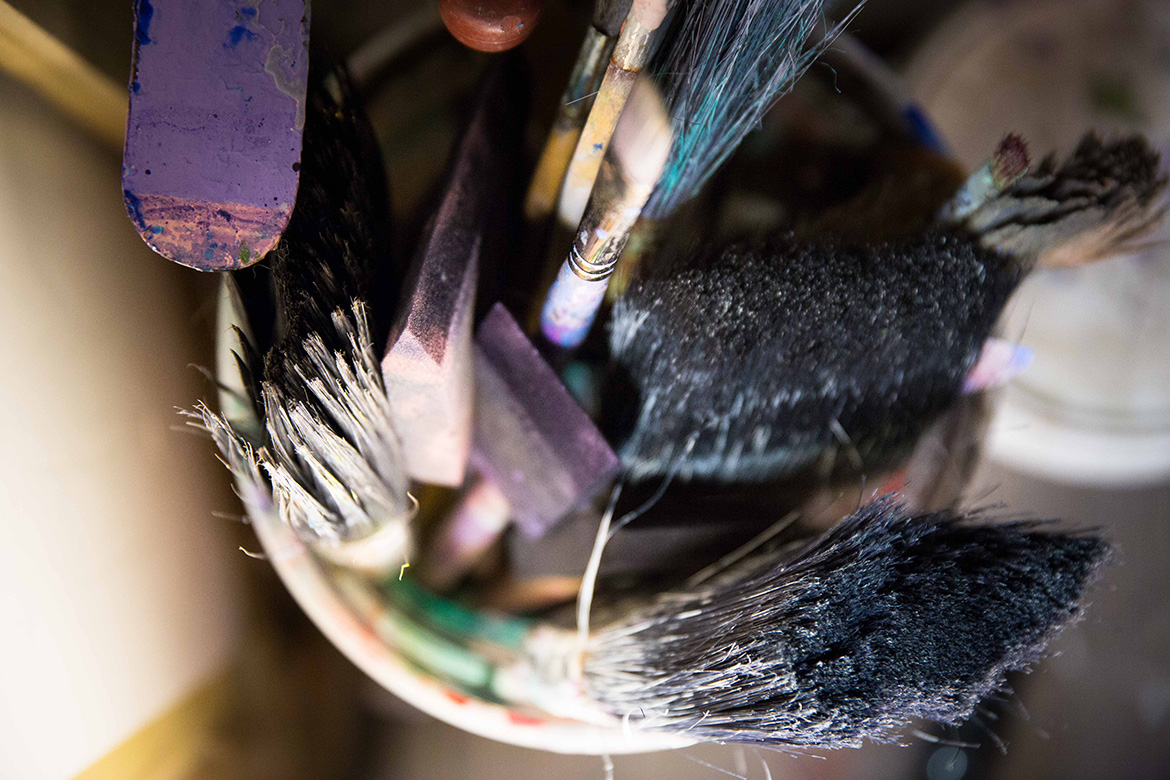
With the invention of synthetics in modernity, dye signifies wildly in today’s economic terms: from the cheap vinegar solutions countless kids wash over hard boiled eggs every spring to silk Prada scarves.
Williams’ recent work with dye questions the ways in which we make predictions and decisions about the value of materials as they become the substance of painting. Williams paints with synthetic dyes on two kinds of surfaces: silks and canvasses. In her show no uniform, currently on view at Interface Gallery, she “elevates” plain silk, saturated with dyes, to the status of the art commodity by intricately displaying them on the gallery wall, evoking the fashion system and its concomitant market. The canvasses signify as the familiar objects of fine art. But Williams’ paratactic arrangement of cloth and canvas put their status into marvelous doubt. This doubt is the effect of her practice of inquiry and refusal.
These works also pose a challenge to painting’s pride of place in the art market. The dye in Williams’ silks leans more towards a deliberate familiarity; that is, all alone they are almost indistinguishable from a haute couture scarf you might find in an uptown or downtown boutique. What makes them everlastingly distinct is how they’re seen — on the wall of a gallery next to a painting.
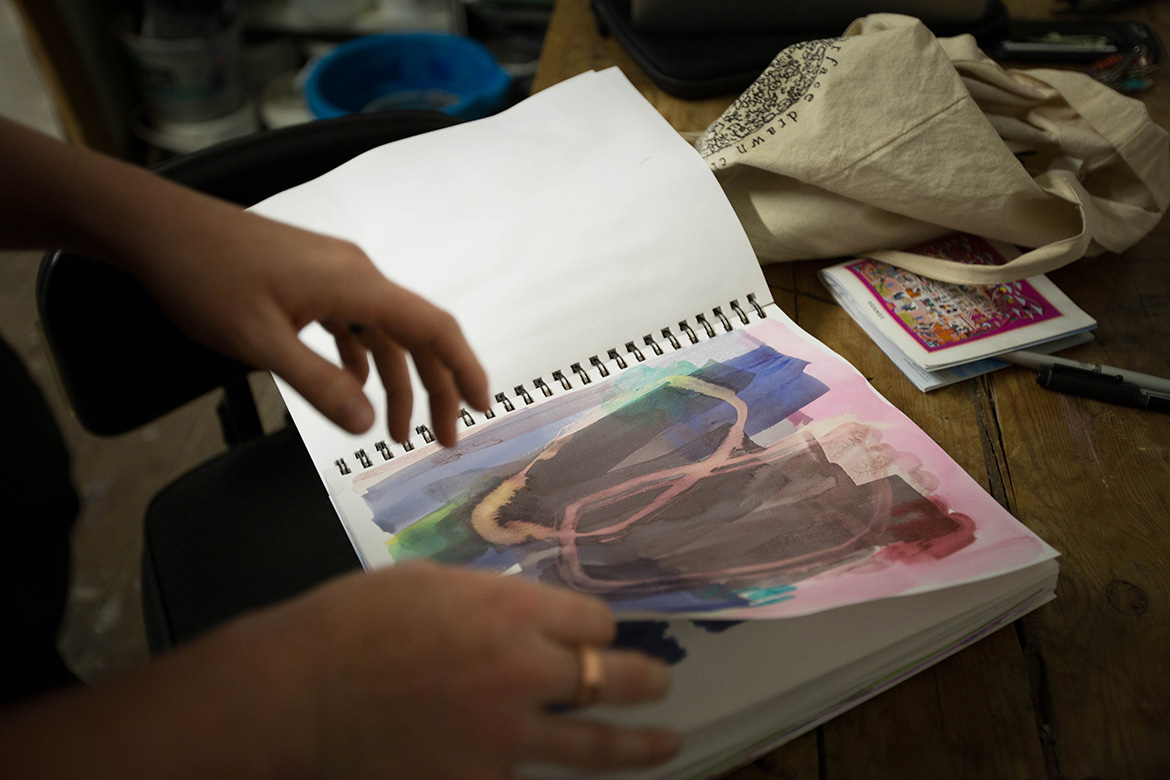
The paintings, by contrast, are full of movement and texture. Composed of dye, acrylic and oils, the paint on Williams’ canvasses is extremely thin, and the paintings themselves are very flat. And yet they embed the energetic kinesis which marks her process.
For Williams, one of dye’s appealing features is its unpredictability. Between its powder form and when it is mixed with a liquid base, dye shifts in color. When applied to canvas, the painter can’t control with precision how it will translate and transform. Dye spreads, fades, brightens and interacts with sunlight and other natural elements, probiotically. The palette of Williams’ paintings tend to be somewhat earthy and natural, but the marks she makes reflect, intensely, the movement of her hand and tools.
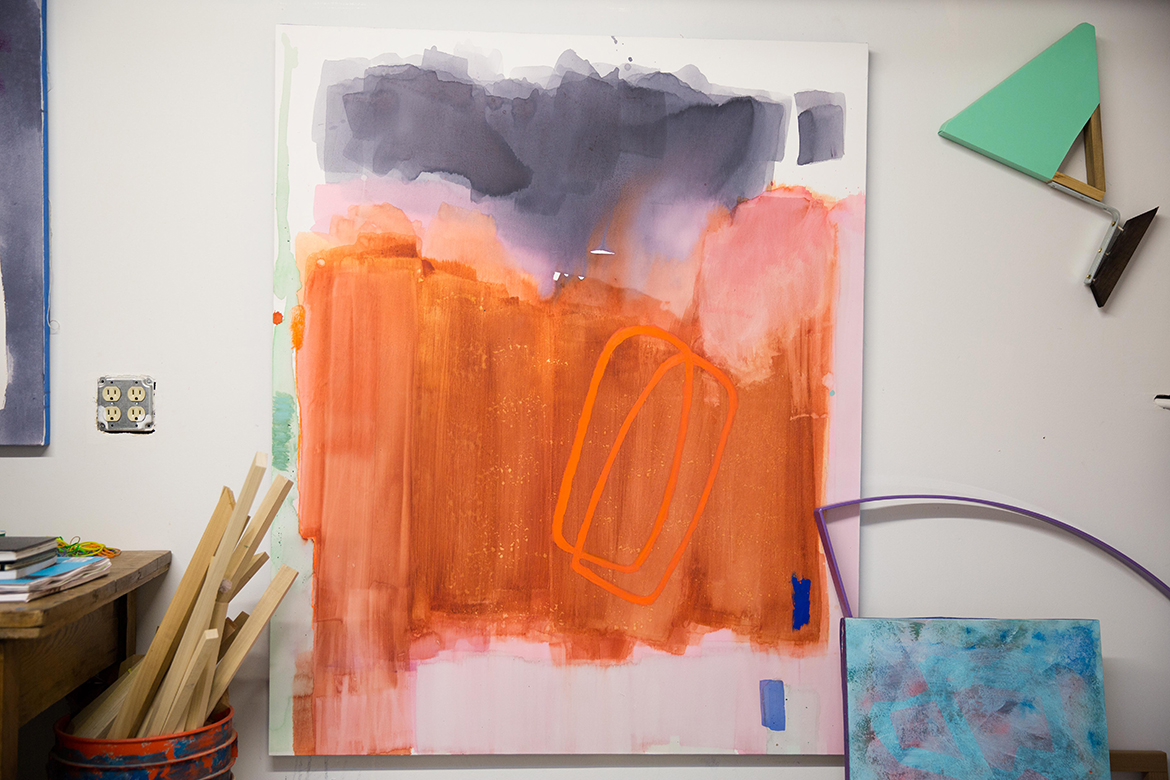
Williams is concerned with the viewer, vision and value. Her paintings are often framed and hung in ways that partially occlude them from direct perception. To see these paintings, we have to bend, slant, contort and strain. Denying the viewer direct access, she reveals and threatens our sense of propriety over her paintings. Such techniques make the paintings technically difficult, but the difficulty is part of the pleasure of seeing her work.
For no uniform, Williams fittingly eschewed the traditional prose artist statement for a poem, that classically difficult and opaque form of communication. The poem concludes:
…signal, sign, gesture
the change spreads, you find it on the floor, soft or cold, it only hopes to open windows
flow, fold rigid, hold on to letting go
there is always more to the thing — infinite loops
I keep wanting to connect the “difficulty” of Williams’ work with all the other ways in which we make our lives more difficult by electing to participate in different economies.
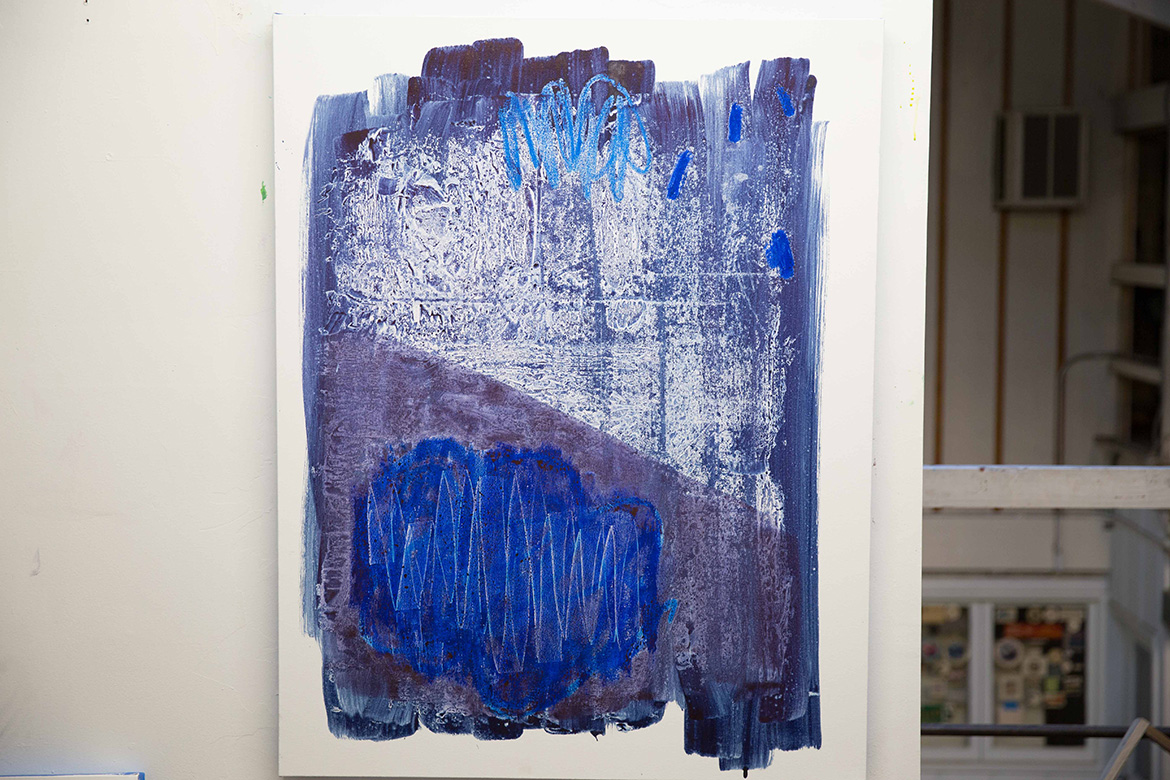
“Economy” literally means “the laws of the house.” In Williams’ paintings, there are no laws of the house. If the rule of painting says that an abstract image on canvas is superior to a tie-dyed scarf, Williams says no. If the rule of painting says that paintings ought to be displayed in the way most amenable to direct perception by their viewers (and potential owners), Williams says no. Even on a formal level, her extensive reliance on chance by using dye is a way of saying no to whatever “rules” of painting suggests calculated intention is best.
I keep saying these paintings are difficult. I also want to say that they are extremely approachable. In some perverse way, through her sustained attempts to obstruct our view, the pleasure of these paintings is actually amplified. If her work “only hopes to open windows,” even by semi-closing them, this hope is realized. Now the window is open. Look out.